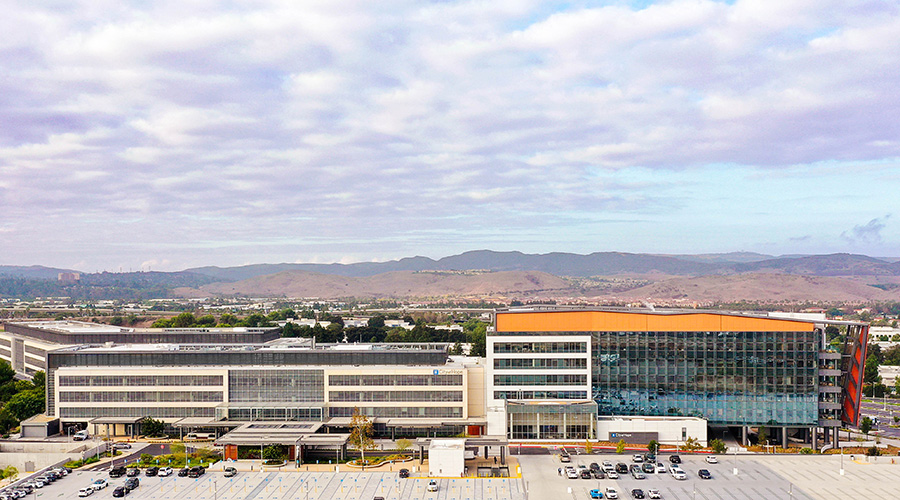Healthcare organizations face daunting challenges from countless forces beyond their control. For example, the COVID-19 pandemic and its rapidly mutating variants has made it especially difficult for healthcare organizations to develop long-term facility planning strategies as they continue to grapple with rising caseloads and caregiver shortages and fatigue. As prominent as the COVID-19 pandemic has been and continues to be, hospitals also must prepare for other potentially disruptive events that could threaten their operations. There is no time to wait until the end of the pandemic because the goalposts continue to move.
Now is the time for healthcare facilities managers to understand and clearly define their organization's priorities. Begin by identifying the most significant need for each facility in the system. Then address those needs strategically in a way that maximizes value while minimizing expenses.
Moving forward, managers need to incorporate more flexibility into their strategic facility planning to foster resiliency. These key challenges, considerations and insights can help managers ensure adaptability in the face of changing economic conditions.
Conduct a pandemic postmortem
As ground zero for the pandemic, healthcare institutions quickly transformed their buildings and campuses to meet the needs of surging case counts. Decisions needed to be made rapidly, often with little data. Some interventions and solutions were successful, while others were not.
With the benefit of hindsight, now is the time for C-suite leaders to review those decisions and assess the outcomes, documenting actions, solutions, drivers, and — most importantly — implementation. This can provide valuable insight when addressing future situations. When conducting these assessments, managers must remember to do a postmortem on the unsuccessful projects, as well as on the successful ones. Document the lessons learned, which will be valuable in developing action plans for future events.
Prepare for telemedicine
Perhaps one of the most positive impacts of the pandemic has been the boost it gave to the acceptance of telemedicine. As lockdowns made in-person physician and hospital visits increasingly difficult, telemedicine finally came into its own. And based on its popularity with patients, it is here to stay. According to a survey of 2,000 Americans conducted by OnePoll on behalf of Kaiser Permanente in late 2020, 85 percent of respondents said they were likely to select telehealth for their next primary care appointment, and 73 percent said they were likely to choose it for their next specialty care appointment. However, the next generation of telemedicine will bring its share of challenges, including more IT infrastructure and security to handle the increase in data and HIPAA requirements. Equitable access to telemedicine will also need resolving as each member of society does not necessarily have a device that allows for access. A critical issue will be security, as more and more hospitals are experiencing ransomware cyberattacks. And of course, patient privacy is of the utmost importance: people want to know their data is secure.
Anticipate recurring surges
At the peak of the pandemic in 2020, many hospitals experienced declining revenues due to the need to cancel elective surgeries to maintain available beds. This situation placed considerable strain on hospital budgets that continues to impact planning decisions today and into the future. The inability to factor elective surgeries into annual revenue planning could become the new normal, depending upon future viral mutations and their impact. Alternatively, systems must consider somehow separating the elective surgical program and supporting components from others to allow for elective surgeries to continue in such an event.
Dig into the details
Read between the lines. For most hospitals, the strategic planning process and growth projections are based on data from the past two years with population trends factored in. With the pandemic's impact on health systems, the data from the last two years is highly skewed, representing what is hopefully a once-in-a-century anomaly.
Rather than rely on "Covid data," managers need to dig deeper into population health information and demographics and read between the lines. Ask the following questions: Does the organization have adequate data? Is it accurate? Does it account for future growth? What are the critical variables that need to be identified?
Remember, the staff is a manager’s greatest asset. While new buildings, beautiful lobbies and farm-to-table organic dietary options are often touted as key patient satisfaction factors, front-line staff is the greatest asset. The pandemic has impacted these workers disproportionately. As a result, many healthcare systems have seen a significant rise in early retirements and resignations. Resignations in the healthcare sector increased 3.9 percent over 2020 levels, according to a study published in the Harvard Business Review, second only to the tech sector. Resignations were higher in fields where employees were most susceptible to burnout from "extreme increases in demand due to the pandemic,” according to the publication.
Between May and September 2021, 20 million Americans voluntarily left their jobs in what has been called the Great Resignation, according to the U.S. Bureau of Labor Statistics. Over those five months, 2.6 million of those resignations came from the healthcare and social assistance category. As a result, future facility plans need to take available labor pools — and the lack thereof — into greater consideration than they have in the past. Replacement facilities vs. new facilities and expansions will have to contend with nuanced challenges in anticipation of staffing. Organizations will need to partner with lean experts and designers to develop operational models and supportive designs that anticipate the staffing challenges.
Maintaining an edge
Lasting repercussions from the pandemic, combined with societal and cultural trends, will continue to impact strategic facility planning in the healthcare industry. Historically, change has been slow to take hold in healthcare. But to remain competitive, healthcare leaders will need to align their facility space planning strategies and requirements with rapidly evolving factors — utilization rates, demographic data, growth strategies and operational models — to be prepared for the next generation of healthcare delivery.
Melanie Harris, AIA, LSSYB, is healing practice director with BSA LifeStructures. Chase Miller, AIA, ACHA, EDAC, is director of planning with BSA LifeStructures.

 State of the Facilities Management Industry in 2025
State of the Facilities Management Industry in 2025 City of Hope to Open New Cancer Specialty Hospital in California
City of Hope to Open New Cancer Specialty Hospital in California Montefiore Einstein Opening New Inpatient Center for Youth in the Bronx
Montefiore Einstein Opening New Inpatient Center for Youth in the Bronx Skill Stacking: How Micro-Credentials Are Reshaping Trades
Skill Stacking: How Micro-Credentials Are Reshaping Trades Prima Medicine Opens New Location in Tysons, Virginia
Prima Medicine Opens New Location in Tysons, Virginia